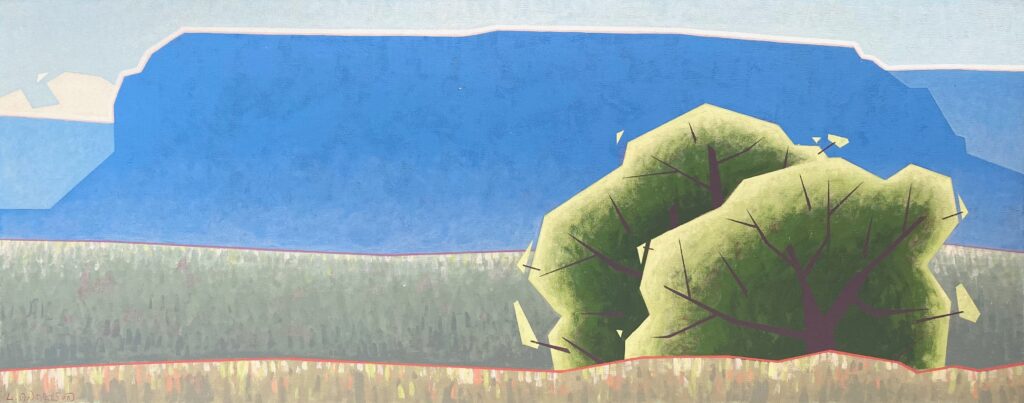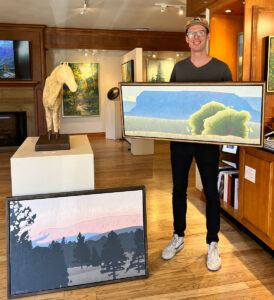
Luke Anderson’s work is rooted in places and experiences he has lived and seen, reimagining the experience from memory and reference photos, and using layers and reductive techniques for depth and texture. The paintings incorporate contemporary elements of surrealism, abstraction, and graphic design into the often more traditional genre of Western Art. Ann Korologos Gallery sat down with painter Luke Anderson to share an interview with you, below.
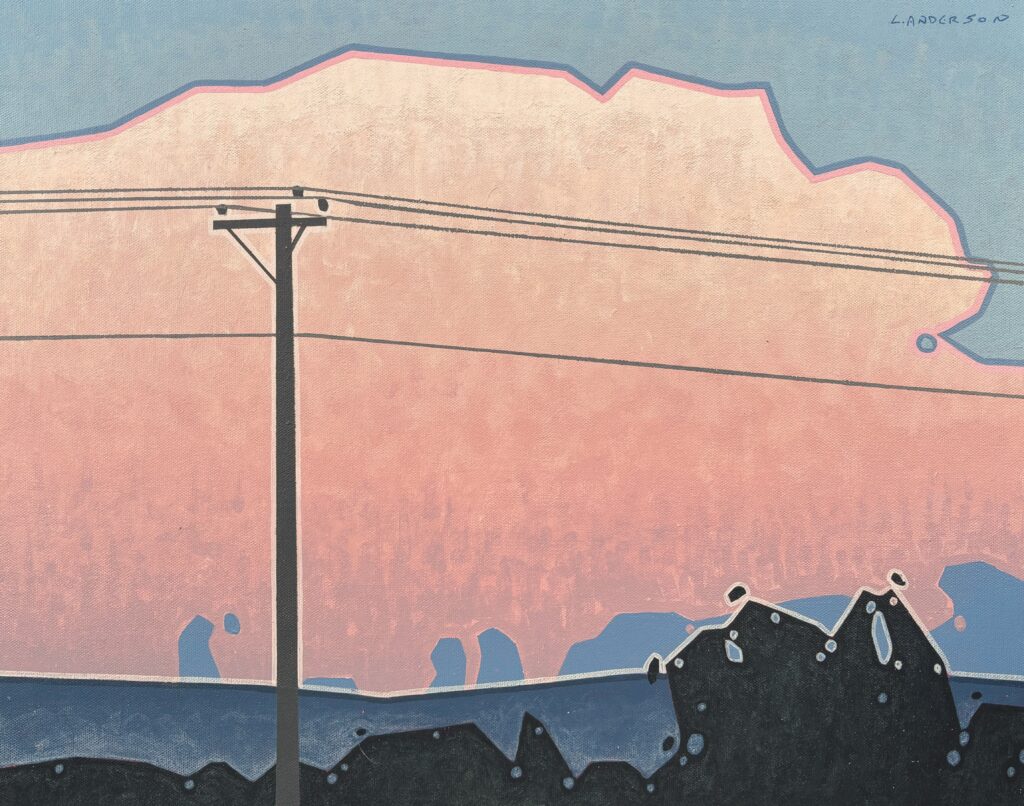
Luke Anderson: I hope to inspire people to look around and appreciate the beauty around wherever they happen to be. The warm low light of early morning or evening can transform any type of landscape or city street into an entirely different world.
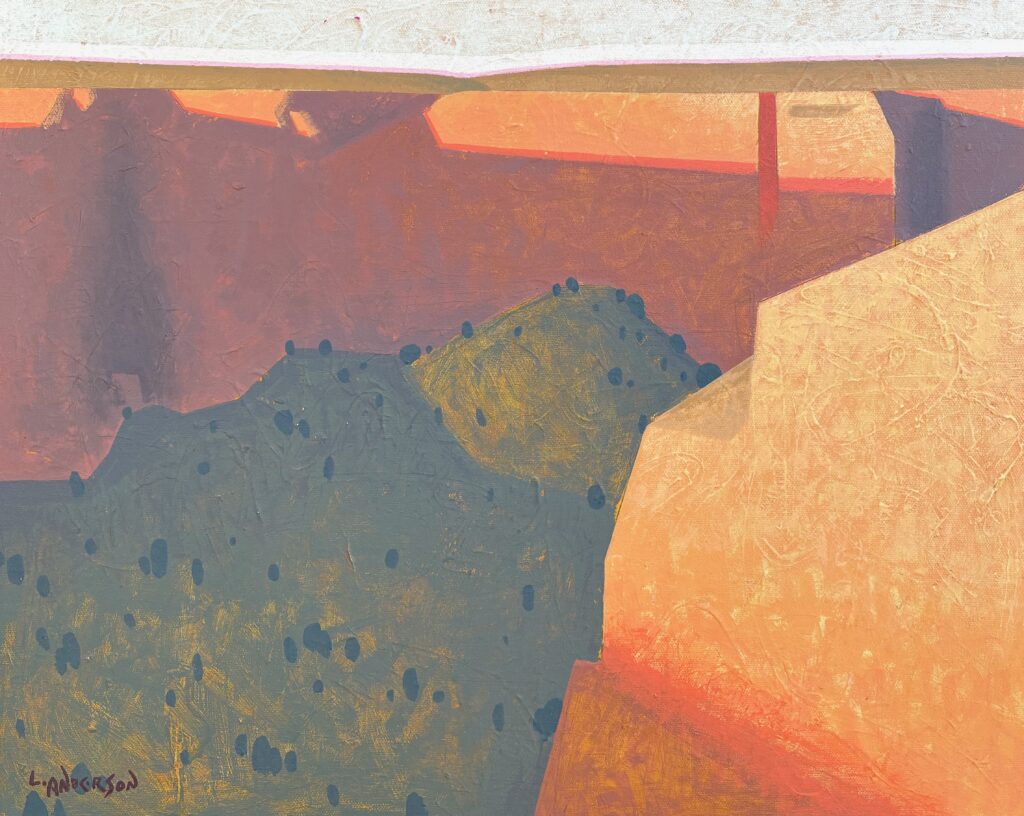
Luke Anderson: My landscapes are simplified and abstracted and simplified, but for the most part derived directly from real places and scenes, so most of my process just involves a lot of trial-and-error testing out different ways to remove as much detail and information as possible and still retain the essence of the scene. I don’t do a ton of sketching or drawing to develop pieces – I like to do a lot of that kind of preparatory and exploratory work on the canvas. What ends up getting covered up or removed just becomes part of the complex textural base for the final surface. I use straightedges and masking tape to achieve crisp straight edges and geometric shapes. I like to use sandpaper and other tools to lightly distress the surfaces and use transparent washes of oil paint at the end to give the paintings subtle tints of warmth and light patinas to give them a slightly antique look, which I’ve found balances well with the very harsh, contemporary linear style.
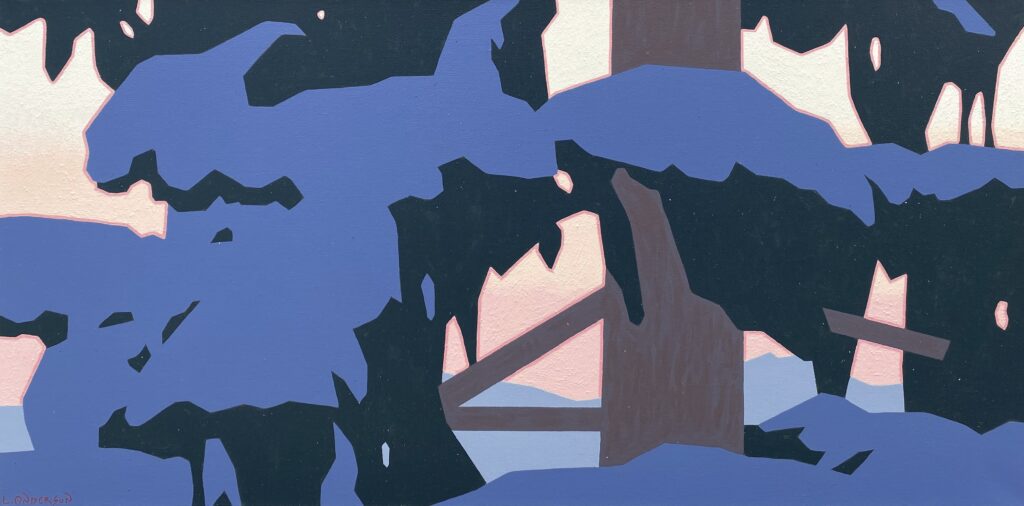
Luke Anderson: Working in the studio my most productive painting hours are roughly between 10 am and 4 pm. Some artists I know like to work late at night when things are quiet, and others can get the energy to work immediately right when inspiration strikes, but I’ve found for myself it’s better to keep a more regular schedule and work during the daylight hours when I know I can see what I’m working on most accurately and am making the best decisions. I generally seem to capture my references for paintings either in the earlier morning or the late afternoon into sunset – those times when the sun is lower in the sky and the light is a bit warmer, and the shadows are longer and deeper and more dramatic. I do sometimes gravitate towards midday light as well, when the daylight is more uniform and tends to show and exaggerate space and atmosphere better.
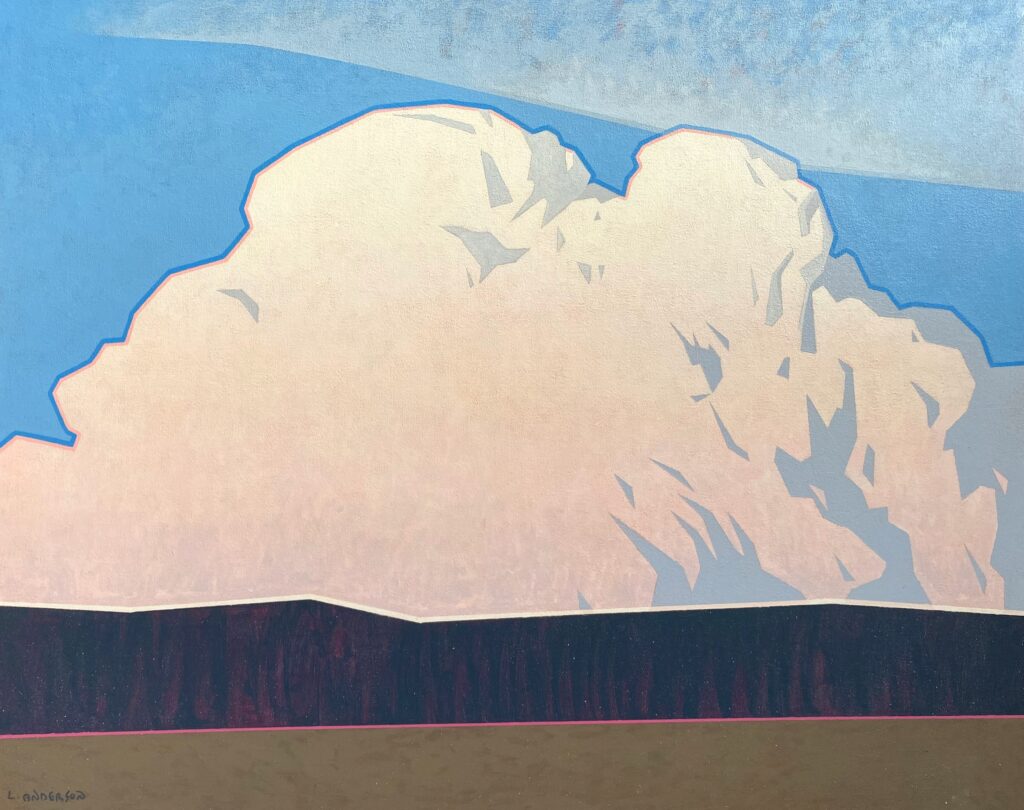
Luke Anderson: Like most landscape painters, light is my primary concern in my paintings. One of my goals as my paintings have gotten more minimal and abstract is how to retain the sense of brightness and luminosity when reducing objects down to 2 or 3 colors or values. I’ve found that being able to manage contrast and color saturation effectively can help retain a sense of brightness on a flat shape. Some strategically placed highly chromatic red or green lines also help to communicate the hazy effect as light bends around the edges of objects, not just the light that reflects off the surfaces.
